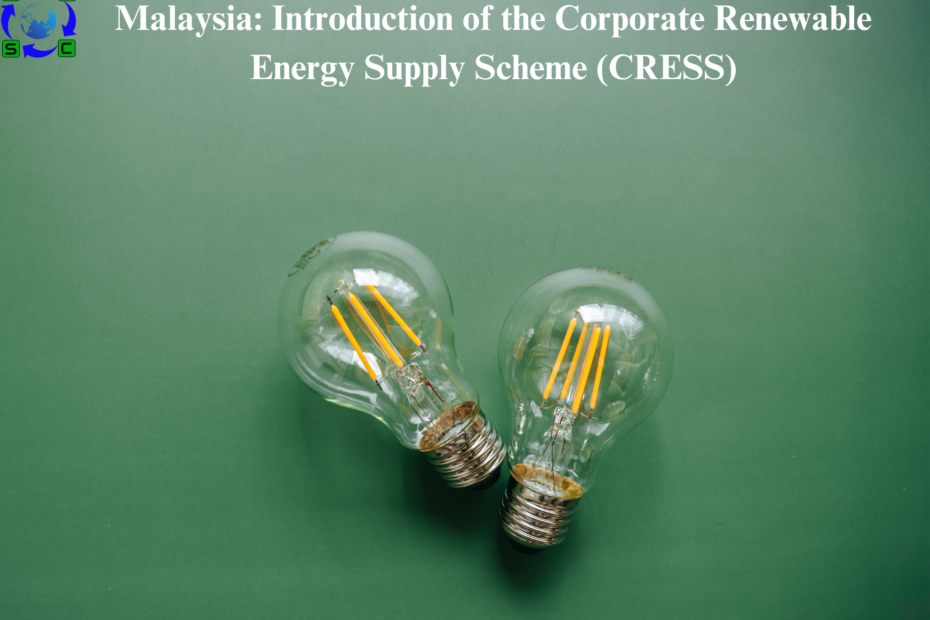 The Corporate Renewable Energy Supply Scheme (CRESS) was introduced by the Ministry of Energy Transition and Water Transformation (“PETRA”) on July 26, 2024, and it is scheduled to start in September of that same year. With an open grid access system, which allows third parties to provide or acquire power via the grid network system for a set system access fee, this effort seeks to improve corporate firms’ access to green electricity supply.
The Corporate Renewable Energy Supply Scheme (CRESS) was introduced by the Ministry of Energy Transition and Water Transformation (“PETRA”) on July 26, 2024, and it is scheduled to start in September of that same year. With an open grid access system, which allows third parties to provide or acquire power via the grid network system for a set system access fee, this effort seeks to improve corporate firms’ access to green electricity supply.
The Government Renewable Energy Enhancement for Niche Sector Initiative, or GREENS MADANI Initiative, includes the CRESS initiative. Its goal is to assist the goals of the high-priority energy transition sector.
The CRESS framework
- Under CRESS, business entities and qualified renewable energy (RE) generators can negotiate for the provision of green power on mutually agreeable terms via the current supply system.
- Corporate entities can participate in the New Enhanced Dispatch Arrangement (NEDA) market to acquire RE directly from designated RE generators with third-party access (TPA) or via the TNB grid network.
- The Single Buyer (SB) and Grid System Operator (GSO) will oversee market and system operations, including access and dispatch, while the Energy Commission will oversee the CRESS program.
- TNB will keep up its function as a utility power provider, providing corporate businesses with the necessary electricity both throughout and after the RE supply term.
General requirements for CRESS participation
- CRESS is available to new or current commercial and industrial TNB consumers seeking new or increased power supply needs, as well as new or existing RE generators linked to the grid’s high voltage (HV) level.
- Green consumers and RE generators need to establish a direct connection via the grid network infrastructure.
- The Power System Study’s (PSS) conclusions serve as the basis for connection limitations.
- To maintain system stability and dependability, renewable energy generators (RE) should deliver a steady supply of power. However, they can also give non-constant outputs, although at a higher system access fee.
The advantages and effects of CRESS
- Energy market liberalization: CRESS is a step in the right direction, lowering the costs and hazards of the nation’s electrical supply infrastructure while giving entrepreneurs fair opportunity for healthy competition. As a result, the CRESS program will become the primary focus of future RE development instead of the standard PPA paradigm.
- Investment and employment creation: around 14,000 new jobs in the sustainable energy sector are anticipated to be created by CRESS, in addition to roughly RM10 billion in direct investments.
- Reduction of carbon emissions: CRESS intends to reduce carbon emissions by 701,000 tCO2 annually by increasing RE capacity from the existing 26% (10.6GW) to 40% by 2035 and 70% by 2050.








 Authorised IMDS & CDX Training & Consulting partner for
Authorised IMDS & CDX Training & Consulting partner for





